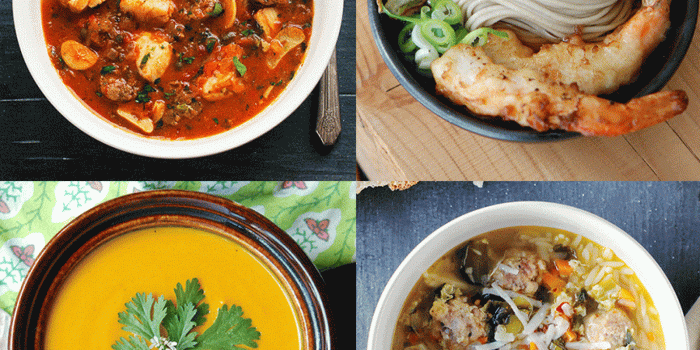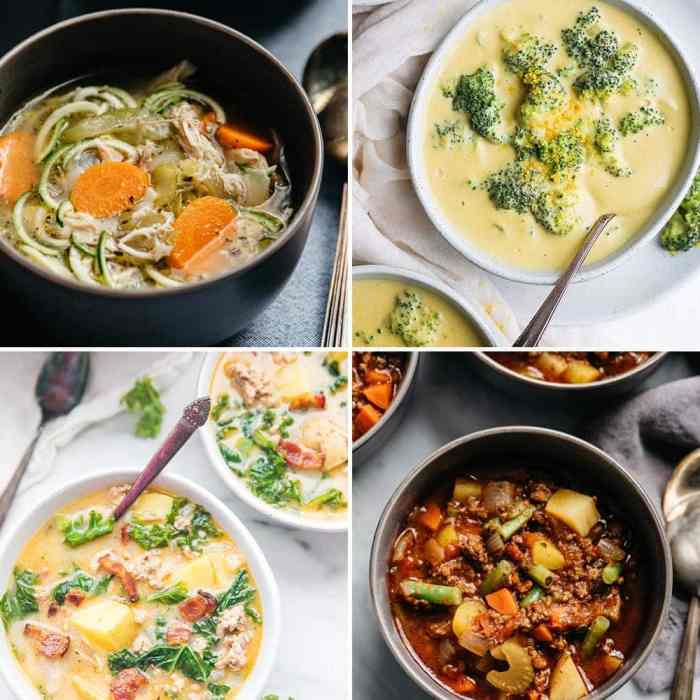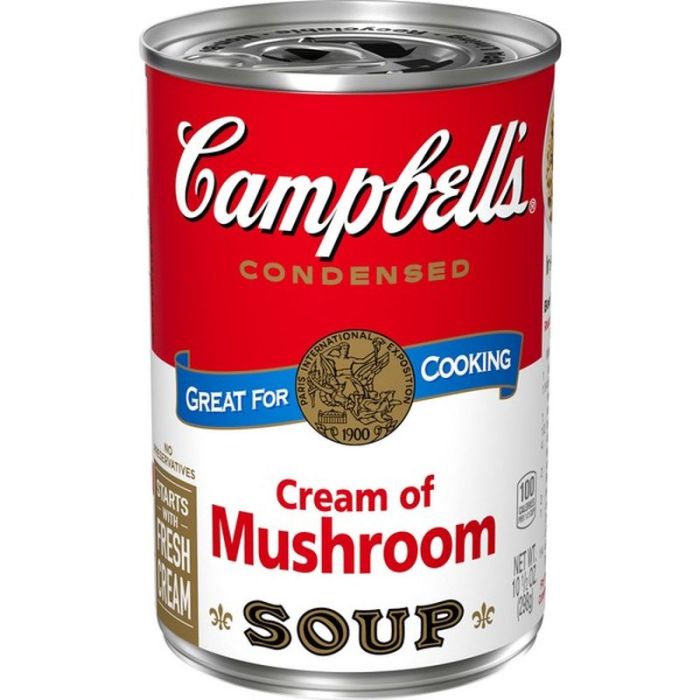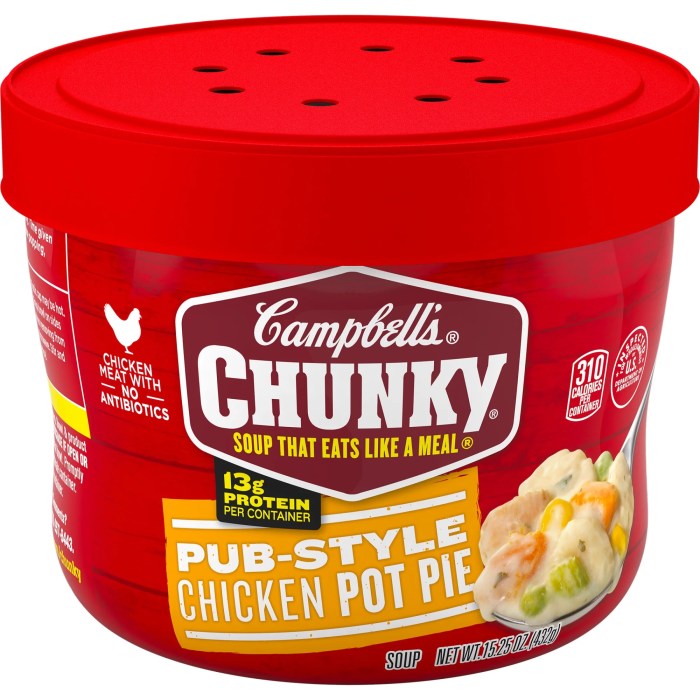Popular Whole Foods Soup Ingredients
Whole foods soups recipes – Whole Foods Market-style soups emphasize fresh, seasonal ingredients and flavorful broths. Understanding the key components allows for the creation of nutritious and delicious soups at home. This section details common ingredients and their roles in achieving that signature Whole Foods taste.
Common Vegetables in Whole Foods Soups

Source: andrewzimmern.com
Five vegetables frequently featured in Whole Foods-style soups include carrots, celery, onions, potatoes, and leafy greens such as spinach or kale. These provide a base of sweetness, savory notes, and essential nutrients.
Popular Protein Sources
Three common protein sources found in Whole Foods soup recipes are lentils, beans (such as chickpeas or black beans), and chicken or vegetable broth. These contribute both protein and depth of flavor to the soups.
The Role of Herbs and Spices
Herbs and spices are crucial for building complex flavor profiles in Whole Foods soups. Common choices include fresh herbs like thyme, rosemary, and bay leaves, along with spices such as cumin, coriander, and turmeric. These add layers of aroma and taste, enhancing the overall sensory experience.
Ingredient Breakdown Table
| Ingredient | Flavor Profile | Nutritional Benefit | Common Usage in Whole Foods Soups |
|---|---|---|---|
| Carrot | Sweet, earthy | Rich in beta-carotene (Vitamin A) | Base vegetable, adds sweetness |
| Celery | Savory, slightly bitter | Good source of Vitamin K and fiber | Adds savory notes and texture |
| Onion | Sharp, pungent, savory | Contains antioxidants and Vitamin C | Base vegetable, provides depth of flavor |
| Lentils | Earthy, slightly nutty | Excellent source of protein and fiber | Adds protein and heartiness |
| Thyme | Earthy, slightly lemony | Antioxidant properties | Enhances savory flavors |
Recipe Categorization by Seasonality
Whole Foods soups often highlight seasonal produce. This section explores how recipes can be tailored to different seasons, maximizing flavor and nutritional value.
Seasonal Soup Recipes
Here are five examples of Whole Foods-style soup recipes categorized by season, emphasizing seasonal ingredients and flavor profiles.
- Fall: Butternut Squash Soup with Sage and Toasted Pepitas. Features sweet butternut squash, earthy sage, and crunchy pepitas.
- Winter: Hearty Beef Stew with Root Vegetables. Includes beef, carrots, potatoes, parsnips, and turnips for a warming and satisfying soup.
- Spring: Asparagus and Pea Soup with Lemon Zest. Highlights fresh asparagus and peas with a bright lemon flavor.
- Summer: Gazpacho (cold tomato soup) with Cucumber and Basil. Uses ripe tomatoes, refreshing cucumber, and fragrant basil for a cool and vibrant soup.
- Summer: Corn Chowder with Smoked Paprika. Features sweet corn, smoky paprika, and perhaps some potatoes for creaminess.
Adapting Recipes to Different Seasons
Three tips for adapting soup recipes include substituting similar vegetables, adjusting cooking times based on ingredient density, and balancing flavors to complement the seasonal produce.
Visual Representation of Seasonal Variations
Imagine a circular chart divided into four quadrants, each representing a season. Within each quadrant, pictures of the key ingredients for that season’s soup would be displayed. For example, the fall quadrant would feature butternut squash, sage, and apples; winter might show root vegetables and beef; spring would depict asparagus, peas, and fresh herbs; and summer would showcase tomatoes, cucumbers, and corn.
Exploring whole foods soups recipes can be a rewarding journey towards healthier eating. If you’re looking to expand your repertoire with something unique and nutritious, consider trying recipes for nettle soup ; it’s a delicious and surprisingly versatile addition to your collection of wholesome, nourishing soups. Remember, the focus should always be on finding recipes that align with your personal health goals and preferences within the broader context of whole foods cooking.
Arrows could connect the seasonal ingredients to the appropriate soup recipe names.
Recipe Variations Based on Dietary Needs: Whole Foods Soups Recipes
Adapting Whole Foods soup recipes to accommodate various dietary restrictions is straightforward, often involving simple ingredient substitutions. This section explores options for vegetarian, vegan, gluten-free, and dairy-free diets.
Vegetarian Whole Foods Soups

Source: oursaltykitchen.com
Three vegetarian Whole Foods soup recipes could include a hearty lentil soup with vegetables, a creamy tomato soup with roasted red peppers, and a black bean soup with corn and cilantro.
Vegan Adaptations
To make the above vegetarian soups vegan, replace any dairy-based cream or butter with plant-based alternatives like coconut milk or cashew cream. Ensure that vegetable broth used is vegan-friendly.
Gluten-Free vs. Standard Soup Comparison
A gluten-free version of a standard Whole Foods soup would primarily differ in the type of broth used (ensuring it’s gluten-free certified) and the avoidance of any added thickeners or seasonings containing gluten.
Dairy Allergy Modifications
To accommodate dairy allergies, simply omit any dairy products such as cream or cheese. Use plant-based milk alternatives or thicken the soup with pureed vegetables or starch-based thickeners such as arrowroot powder.
Cooking Techniques and Methods
Mastering the basics of preparing broth and understanding various cooking methods will elevate your Whole Foods soup game. This section covers essential techniques for creating delicious and nutritious soups.
Preparing Vegetable Broth from Scratch
To prepare a basic vegetable broth, sauté chopped onions, carrots, and celery in olive oil. Add water, herbs (like bay leaves and thyme), and simmer for at least 30 minutes. Strain the broth before use, discarding the solids. Adding vegetable scraps (onion peels, carrot tops) to the pot enhances the flavor.
Cooking Methods: Stovetop, Slow Cooker, Pressure Cooker
Stovetop cooking offers precise temperature control but requires more hands-on attention. Slow cookers provide a convenient, hands-off approach, resulting in tender vegetables and flavorful broths. Pressure cookers significantly reduce cooking time while maintaining nutritional value.
Achieving Creamy Texture without Cream
A smooth and creamy texture can be achieved by blending a portion of the soup until smooth, then combining it with the remaining soup. Alternatively, pureed vegetables such as potatoes or butternut squash can naturally thicken and creamify the soup.
Maintaining Vegetable Color and Nutrition
Three tips for preserving vibrant color and nutrition include using minimal water, avoiding overcooking, and adding acid (like lemon juice) towards the end of cooking to brighten the colors.
Serving Suggestions and Presentation
Elevating the presentation of your Whole Foods soups can enhance the dining experience. This section provides suggestions for side dishes, garnishes, and visually appealing serving styles.
Complementary Side Dishes, Whole foods soups recipes
Five complementary side dishes include crusty bread, grilled cheese sandwiches, a simple green salad, quinoa, and roasted vegetables.
Visually Appealing Presentation
Three visually appealing ways to present Whole Foods soups include using attractive bowls, garnishing generously, and creating a layered effect (e.g., with different colored vegetables).
Garnishes to Enhance Flavor and Appearance
Garnishes such as fresh herbs, croutons, toasted nuts, a drizzle of olive oil, and a sprinkle of cheese (if not dairy-free) can significantly enhance the visual appeal and flavor of the soup.
Soup Types, Garnishes, and Serving Suggestions
| Soup Type | Ideal Garnishes | Serving Suggestions |
|---|---|---|
| Tomato Soup | Fresh basil, a swirl of cream (optional), croutons | Grilled cheese sandwich, crusty bread |
| Lentil Soup | Chopped parsley, a squeeze of lemon, a dollop of yogurt (optional) | Whole-grain bread, side salad |
| Chicken Noodle Soup | Fresh dill, chopped chives, shredded chicken | Crackers, crusty bread |
Key Questions Answered
What are the best storage methods for leftover Whole Foods soups?
Allow soups to cool completely before storing them in airtight containers in the refrigerator for up to 3-4 days or in the freezer for up to 2-3 months.
Can I make large batches of Whole Foods soup and freeze them for later?
Absolutely! Freezing is a great way to preserve your homemade soups. Allow them to cool completely before portioning into freezer-safe containers or bags.
How can I thicken my Whole Foods soup without using cream or flour?
Puree a portion of the soup with an immersion blender for a naturally creamy texture. Alternatively, you can add a cooked potato or some lentils to the soup while simmering.
What are some good substitutes for common Whole Foods soup ingredients?
Many substitutions are possible! For example, you can replace carrots with sweet potatoes, celery with fennel, or chicken broth with vegetable broth.


